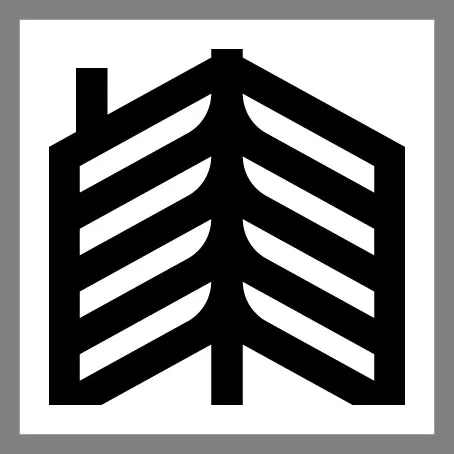Did you know that 83% of homeowners in the United States believe that do-it-yourself (DIY) projects are a great way to improve their homes?
DIY projects for home are a great way to unleash your creativity and transform your living space. Whether you’re a seasoned DIY enthusiast or a beginner, there are plenty of easy projects that you can tackle to spruce up your home. Not only will you save money by doing it yourself, but you’ll also learn new skills and gain confidence along the way. From wallpapering a wall to building a raised garden bed, there’s something for everyone to try.
Key Takeaways:
- DIY projects provide an opportunity to express your creativity and improve your home.
- They are a cost-effective way to save money and learn new skills.
- From wallpapering to building, there are various DIY ideas to explore.
- Embrace DIY as a chance to personalize your space and make it your own.
- Get started with simple projects and gradually take on more complex ones.
Wallpaper a Wall
Adding wallpaper to your wall is a simple and effective DIY décor project that can instantly transform the look and feel of a room. By incorporating color, pattern, and texture, you can create a personalized space that reflects your style. Wallpapering a wall may seem daunting at first, but with the right tools and techniques, you can achieve professional-looking results.
Before you begin, it’s important to measure the height and width of the wall to determine the square footage you’ll need. This will help you calculate the amount of wallpaper required for your project. Remember to subtract any square footage for doors or windows, as you won’t need to cover these areas.
When choosing wallpaper, consider using prepasted varieties, as they are easier to apply. If you opt for a patterned wallpaper, be sure to buy extra rolls in the same dye lot to ensure a seamless look.
To wallpaper your wall:
- Start by preparing the wall surface, ensuring it is clean and smooth. Remove any dust, dirt, or old wallpaper.
- Apply wallpaper primer or sizing to the wall to create a smooth surface for the wallpaper to adhere to.
- Measure and cut the wallpaper according to the dimensions of your wall, adding a few extra inches to the length to allow for adjustments.
- Apply adhesive to the back of the wallpaper, following the manufacturer’s instructions.
- Starting from the top of the wall, carefully align the wallpaper with the edge, ensuring it is level.
- Smooth out any air bubbles or wrinkles using a wallpaper smoothing tool or a clean, dry cloth.
- Continue applying the wallpaper, matching the pattern and overlapping the edges slightly to create a seamless look.
- Trim any excess wallpaper using a sharp utility knife or wallpaper trimmer.
- Allow the wallpaper to dry completely before moving or rearranging any furniture.
Remember, practice makes perfect, so don’t be discouraged if it takes a few tries to get the hang of wallpapering. Take your time, follow the instructions carefully, and soon you’ll have a beautifully wallpapered wall that adds character and charm to your space.
| Tools and Materials | Estimated Cost |
|---|---|
| Wallpaper | $XX per roll |
| Wallpaper adhesive | $XX |
| Wallpaper smoothing tool | $XX |
| Sharp utility knife | $XX |
| Wallpaper primer or sizing | $XX |
| Clean, dry cloth | Included |
Disclaimer: The estimated cost may vary depending on the brand, quality, and location of purchase.
Make Compost
Composting is a simple and eco-friendly DIY habit that diverts materials from the waste stream and improves soil quality. By composting, you can reduce waste and create nutrient-rich soil for your garden or plants.
What can be composted?
You can compost a variety of materials, including:
- Fruits and vegetables
- Coffee grounds
- Shredded newspaper
- Grass clippings
What should not be composted?
While many organic materials can be composted, there are some items you should avoid including in your compost pile:
- Meat and dairy products
- Oily or greasy foods
- Plastic or synthetic materials
Achieving the ideal compost ratio
To create compost with optimal nutrient content and decomposition, it’s important to achieve the right balance of brown and green materials. The ideal compost ratio is three parts brown material, such as leaves and twigs, to one part green material, such as kitchen scraps and grass clippings.
Creating and maintaining your compost pile
Place your compost pile or bin in a warm, sunny spot in your yard or garden. Keep the compost moist, but not too wet, by adding water if necessary. To aid the breakdown process, turn the compost pile regularly using a garden fork or shovel.
By making compost, you’re not only diverting waste from landfills but also improving your soil and contributing to a more sustainable environment.
| Brown Material | Green Material |
|---|---|
| Leaves | Kitchen scraps |
| Twigs | Grass clippings |
Tile a Backsplash
Adding a backsplash to your kitchen or bathroom not only protects your walls but also adds a decorative element. Choose tiles in different colors, sizes, and shapes to create the desired look. Measure the space and mark your starting point before applying tile mastic to adhere the tiles to the wall. Insert spacers between the tiles and cut them to fit around electrical outlets if needed. The next day, grout the tiles using a rubber float and wipe away any excess grout after it has set for an hour.
Step-by-step guide to tile a backsplash:
- Measure the space and mark your starting point. Use a level to ensure your tiles will be straight.
- Apply tile mastic to the wall using a trowel. Start at the marked starting point and work in small sections.
- Place the first tile on the mastic, pressing firmly to secure it in place.
- Insert tile spacers between the tiles to maintain consistent spacing.
- Continue applying tiles, ensuring they are level and properly aligned.
- If you encounter electrical outlets, use a tile cutter or wet saw to cut the tiles to fit around them.
- Allow the tile mastic to dry overnight.
- Prepare the grout according to the manufacturer’s instructions.
- Apply the grout to the tiles using a rubber float, making sure to fill all the gaps.
- Wipe away any excess grout with a damp sponge.
- Allow the grout to set for about an hour.
- Buff the tiles with a clean cloth to remove any haze.
Benefits of tiling a backsplash:
- Protection: A backsplash helps protect your walls from splashes, stains, and damage.
- Easy to clean: Tiled backsplashes are easy to clean and maintain, especially compared to painted walls.
- Enhanced aesthetics: Tiles offer a wide range of colors, patterns, and textures, allowing you to customize the look of your kitchen or bathroom.
- Durability: Tiled backsplashes are durable and long-lasting, ensuring they will continue to enhance your space for years to come.
| Materials Needed: | Tools Needed: |
|---|---|
|
|
With these steps and materials, you can confidently tile a backsplash in your kitchen or bathroom. Enjoy the process of transforming your space and creating a beautiful, functional backsplash that reflects your personal style.
Install Vinyl Plank Flooring
Vinyl flooring is a versatile and durable option for any room, especially those with high moisture levels like kitchens and bathrooms. With its moisture-resistant properties, vinyl flooring is the perfect choice to withstand the demands of these spaces while adding style and functionality to your home.
When it comes to installation, vinyl flooring is relatively straightforward, making it an ideal DIY project for homeowners. Unlike other flooring options that require bonding to the subfloor, vinyl flooring can be easily laid on top.
To ensure a seamless installation, here are some key steps to follow:
- Measure accurately: Start by measuring the dimensions of your room to determine the amount of vinyl flooring needed.
- Cut around floor ducts: Use a utility knife to carefully cut the vinyl planks to fit around floor ducts and door frames. This ensures a precise and professional-looking finish.
- Unroll and adhere: If you’re using vinyl rolls, carefully unroll them and adhere them to the floor as you go. This helps prevent wrinkles or unevenness in the final result.
- Easy snap-together: If you opt for vinyl plank flooring, take advantage of its convenient snap-together design. This allows you to easily connect the planks, ensuring a tight fit and a seamless appearance.
With vinyl plank flooring, you have the freedom to design your space in a way that suits your tastes. Whether you prefer a classic wood look or a modern tile aesthetic, vinyl plank flooring comes in a wide variety of styles and colors to choose from.
Transform your home with vinyl flooring and enjoy its moisture-resistant properties, easy installation, and stunning visual appeal.
**
Tips for Vinyl Flooring Installation:
**
1. Start with a clean and dry subfloor to ensure proper adhesion of the vinyl flooring.
2. Consider using a self-leveling compound to even out any irregularities in the subfloor.
3. Use a vinyl flooring adhesive or double-sided tape for added stability.
4. Take your time to properly align the planks or rolls and avoid rushing the installation process.
5. Trim the vinyl carefully and use a heat gun for any intricate cuts or angles.
6. Protect your new vinyl flooring by using furniture pads to prevent scratches and dents.
| Advantages of Vinyl Plank Flooring | Disadvantages of Vinyl Plank Flooring |
|---|---|
| 1. Moisture-resistant 2. Low maintenance 3. Wide range of styles and colors 4. Affordable option compared to hardwood or tile 5. Comfortable and warm underfoot |
1. Limited lifespan compared to hardwood 2. Can be prone to scratches and dents over time 3. Can emit VOCs (volatile organic compounds) during installation 4. Not as eco-friendly as other flooring options |
Conclusion
DIY projects for home provide an opportunity to express your creativity, save money, and learn new skills. Whether you choose to tackle a project like wallpapering a wall or installing vinyl plank flooring, there are plenty of easy projects that you can take on to transform your living space.
When starting a DIY project, remember to measure accurately, use the right tools and techniques, and most importantly, have fun! DIY-ing is not only about the end result but also the process itself. It’s a chance to unleash your creativity and put your personal touch on your home.
With just a little bit of effort and creativity, you can turn your house into a home that truly reflects your personal style and taste. So don’t hesitate, get creative, and start your next DIY project today! Your home is waiting for your unique touch.



